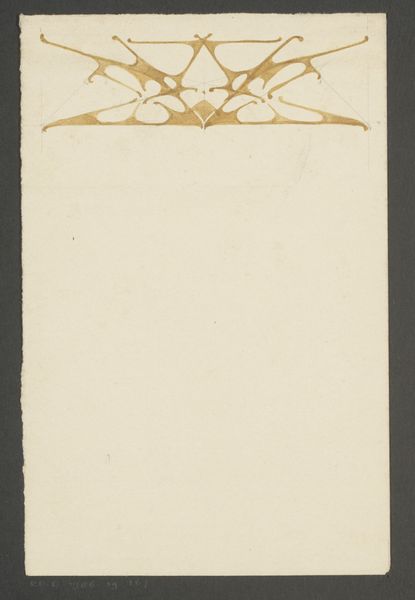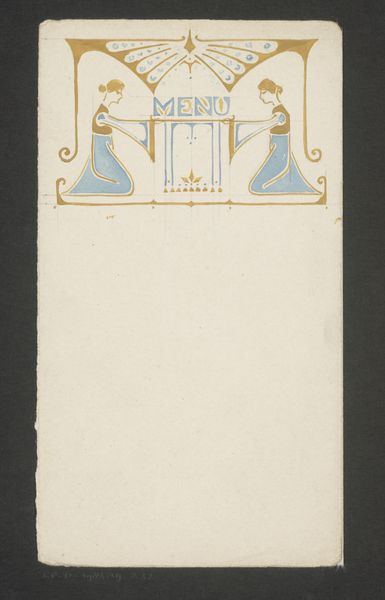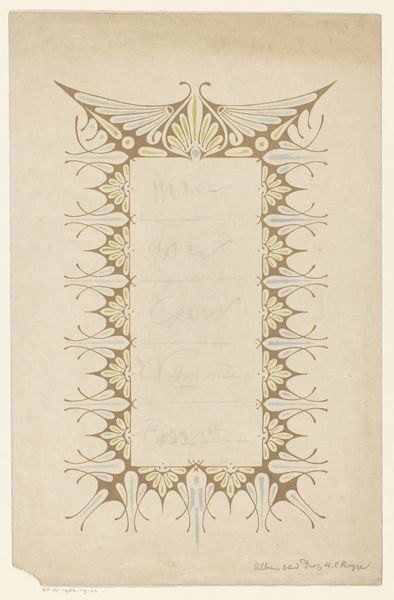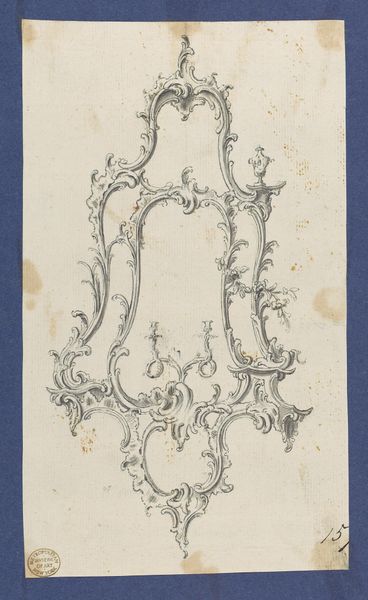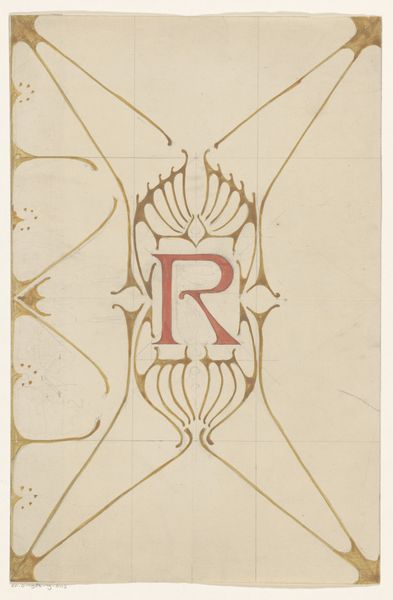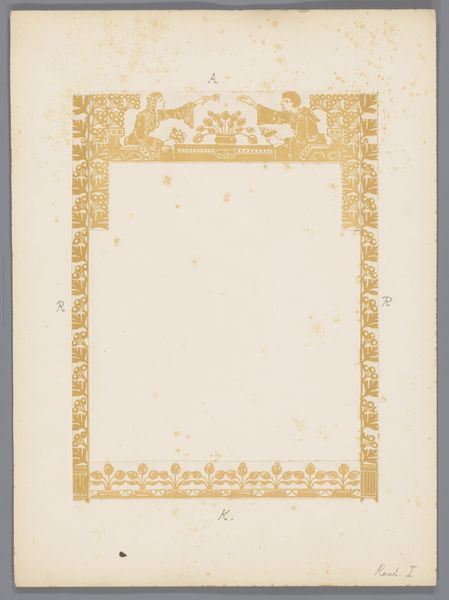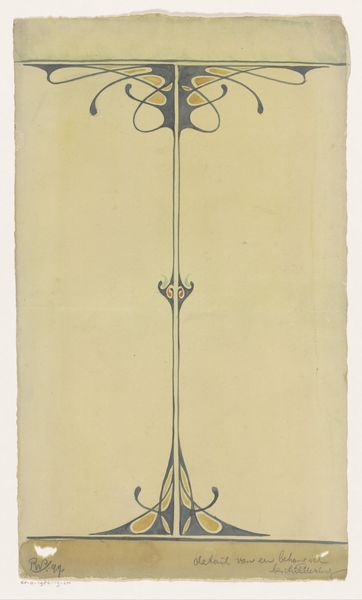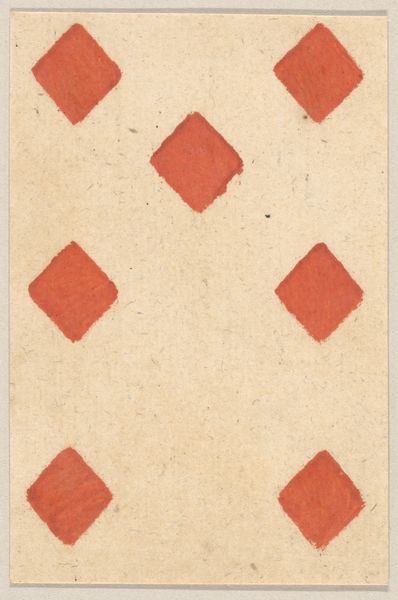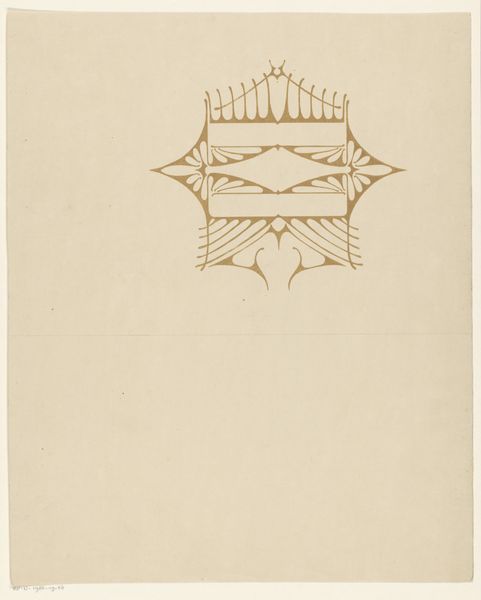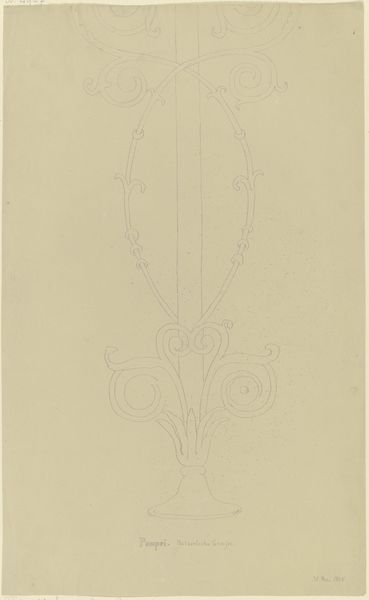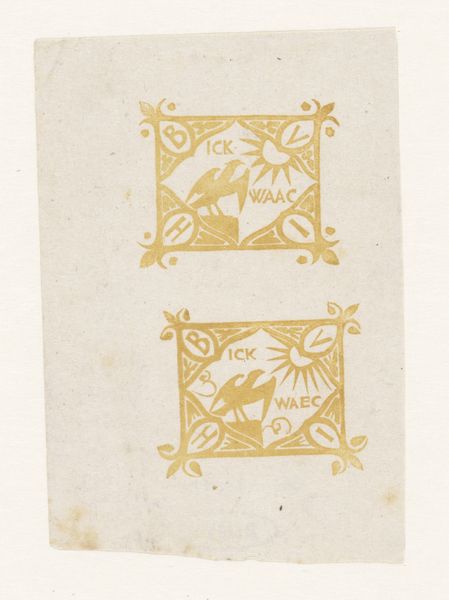
drawing, ornament, paper
#
drawing
#
aged paper
#
ornament
#
light pencil work
#
art-nouveau
#
homemade paper
#
sketch book
#
hand drawn type
#
personal journal design
#
paper
#
personal sketchbook
#
geometric
#
line
#
sketchbook drawing
#
decorative-art
#
sketchbook art
#
design on paper
Dimensions: height 151 mm, width 98 mm
Copyright: Rijks Museum: Open Domain
Curator: This delicate drawing is simply titled, "Ornament." It's attributed to Reinier Willem Petrus de Vries and was created sometime between 1884 and 1952, showcasing a simple elegance on aged paper. Editor: My first impression is how intentionally spare it feels, as if the artist knew exactly how much was needed to create balance. The bare paper becomes an active element. Curator: Exactly. Vries uses light pencil work to create a personal sketchbook design, suggestive of Art Nouveau. Notice the hand-drawn type aesthetic and the careful geometry that underpin what at first glance may seem merely decorative. I’m also intrigued by the symbolism inherent in ornamentation itself. What deeper meanings might be embedded within this? Editor: The function, perhaps, gives us a clue. As a potential title page for a journal, its delicate frame invites a sense of intimacy and reflection. The cultural role of such personal objects tells us something about the value placed on privacy and self-expression during the period. Were journals commonplace? How were they perceived in wider society? Curator: It's interesting you mention journals, because sketchbooks have historically been a realm for the unsaid, for the germination of ideas— a private space for the artist. The symmetrical balance almost suggests a mirror, furthering this invitation to self-reflection. This work reveals the artist's own visual language, a lexicon of recurring shapes and motifs, if we were to look deeper in other sketchbooks. Editor: It brings to mind questions about access, too. The preciousness of materials—homemade paper and specialized drawing implements—speaks to a level of economic privilege, perhaps indicating the socio-economic status of those who kept journals at the time. These everyday artifacts open up broader questions of social history. Curator: I agree. It's easy to overlook such understated pieces, but in their quiet way they whisper about the inner life of individuals and eras. The drawing reminds us to consider the emotional significance of everyday objects and their subtle but lasting cultural weight. Editor: It highlights how what appears on the surface as a minor artwork contributes to the broader cultural narrative and challenges us to consider the politics of representation in even the most humble of designs.
Comments
No comments
Be the first to comment and join the conversation on the ultimate creative platform.
